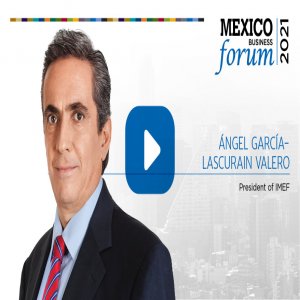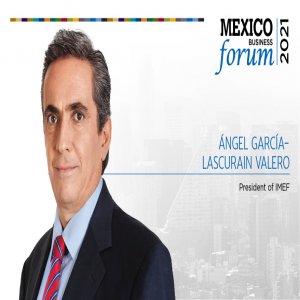
How to Make or Break a Business?
Regardless of their focus or area of expertise, companies live under an undeniable premise: to renew or die. This is true for companies of all sizes and regardless of whether they are new to the market or have years of accumulated experience, according to four decision-makers from four Mexican companies at Mexico Business Forum at the Marquis Reforma hotel in Mexico City on Wednesday.
The four leaders shared their vision and strategies for sustained growth in a discussion led by Roberto Corral, President of the aerospace industry manufacturer Innocentro.
Carlos Lukac, Director General of the 148-year-old funerary company Gayosso, said the key to innovation in an old and traditional industry is finding added-value services that can meet clients’ needs and expectations. “We are all about breaking paradigms. Though we might be in the funerary business, we must consider ourselves part of the hospitality and real-estate sector,” he said. “In that sense, we must think as hoteliers and realters and optimize our service, occupancy rates and average ticket value.”
Mario Rodríguez, CEO of camshaft manufacturer Arbomex, agreed with Lukac in his views on the importance of innovation, saying that this is a priority that must be cultivated from within. “Innovation comes from a corporate culture. To innovate, you have to believe, then create and then grow,” he said. “Similarly, you need creativity to face any obstacles that might emerge. Creativity can drive a business and even make it disruptive.”
The challenges Rodríguez mentioned, however, vary depending on the stage at which the company finds itself. For more consolidated companies, obstacles might refer to the best strategies to sustain growth; for newer players, the challenge might be to properly establish a defined value proposition to compete in the market. Rodrigo Vargas, Founder of MeroMole, a consulting company focused on the restaurant sector, highlighted that even though his company had a unique offering, it still faced challenges related to inherent conditions in the market. “90 percent of all restaurateurs do not hire professional services to build their business. Most business owners think they can make it on their own, but the fact is that eight out of every 10 restaurants close before their five-year anniversary,” he said.
Leonardo Cortina, Director General of miituo, on the other hand, faced the challenge of entering a consolidated and traditionalist industry. As an insurance broker with a disruptive model to sell cheaper auto policies charged by kilometer, Cortina had to approach insurance companies with a strategy that could generate interest among players with greater market experience. However, there is always untapped potential to draw from, he said. “People want to take care of their investments but they do not want to contract a policy because they do not use their car often enough. Our business proposal, therefore, tackled a market segment that insurers had not been able to properly address,” he said.
The risk in finding a proper business model might be more apparent for young companies but Corral also brought up the disruptive nature of technology and its impact on companies that have been working in an industry for years. As a consolidated company in the automotive industry and the second-largest camshaft manufacturer in the world, Arbomex is no stranger to the industry’s transformation toward electric vehicles and for Rodríguez, the best way to target this challenge is by understanding the market and the way the company can change its business to adapt to new conditions. “Electric vehicles might not represent our sudden death but they are certainly worthy of attention,” he said. By 2035, Rodríguez says Arbomex wants to remain the biggest camshaft company in the world but it has also worked to open new market niches and to adopt new materials and processes to participate in a renovated industry.
Meanwhile, Lukac highlighted the importance of the human factor in reinvigorating a business. “People are the source of all innovation and renovation,” he said. He also pointed out that before thinking about what is next for the company, its management must establish a strategic discipline vision to make sure it has already taken the most advantage from its current market. “The grass is always greener on the other side. However, we must learn to take advantage of the opportunities that other players and industries have learned to seize,” he said.
















